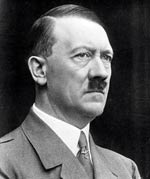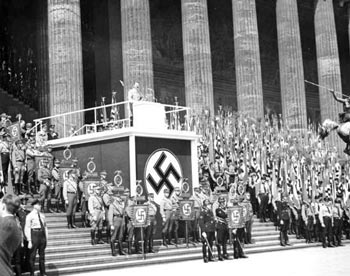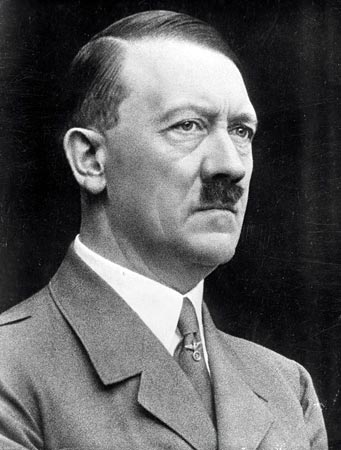Adolf Hitler Biography

Early life
Hitler was born in Austria in 1889 to relatively humble beginnings. His early life gave few hints as to his future destiny. He was a comparative failure and something of a loner. He was twice rejected from his application to study art, and after struggling to survive in Vienna, in 1913, he moved to Munich. In his early life, he had imbibed the anti-semitic feelings which were common for the times but displayed little political interest. On the outbreak of the First World
On the outbreak of the First World War, he joined the German army and got promoted to Corporal. He survived the war and in 1918 – like many other German officers – was bitterly disappointed with the perceived ‘betrayal’ of the German surrender and the harsh retribution meted out by the Versailles Treaty.
Against this backdrop of defeat and threat of turmoil within Germany, Hitler turned to politics and set up a fledgeling political party – the NSDAP (Nazi party) with its mixture of nationalistic and fascist policies.
In 1923, Hitler led his small Nazi party in an attempted seizure of power – known as the Munich beer hall putsch. The putsch failed, and Hitler was sentenced to a lenient jail sentence. It was in prison that he wrote ‘Mein Kampf‘ a rambling exposition of his philosophy which included his growing anti-semitic ideology and ideas of an idealised Aryan race.
“the personification of the devil as the symbol of all evil assumes the living shape of the Jew.”
– Adolf Hitler, Mein Kampf, Chapter 11.

Hitler giving speech
On his release, Hitler then turned his attentions to gaining electoral support and contesting the elections of Weimar Germany. The onset of the Great Depression provided fertile ground for his radical and extremist policies. Against a backdrop of six million unemployed people – many in Germany – felt there was a clear choice between Communism or the Nationalism of Hitler’s Nazi party. With the help of his powerful rhetoric and his own private militia, Hitler led the Nazi party to victory in the 1933 elections. He was made Chancellor and in 1934, on the death of Hindenburg, he was made the President in 1934, Hitler declared himself the supreme leader and ended all pretence to democracy.

Hitler also sought to regain territory lost in the Treaty of Versailles. This was the justification for the Anschluss with Austria and later the reclamation of the Sudetenland in Czechoslovakia. But, Hitler’s ambitions did not merely rest on regaining lost territory. He also began eyeing new territories and, in 1938, successfully gained the whole of Czechoslovakia. Anxious to avoid war, Allied leaders, such as Neville Chamberlain pursued a policy of appeasement and gave into Hitler’s demands.
“I want war. To me all means will be right. My motto is not “Don’t, whatever you do, annoy the enemy.” My motto is “Destroy him by all and any means.” I am the one who will wage the war!”
– Adolf Hitler
However, when it came to Poland, Britain and France decided to oppose Hitler’s intentions, and when Hitler invaded Poland, France and Great Britain declared war on Germany. Yet, it soon became apparent that Germany had built one of the most powerful armies ever created and were technically and tactically superior to the Allied armies.
Until the Battle of Stalingrad in 1942, Hitler’s war machine appeared unstoppable. A parade of stunning military victories led to one of the most successful military conquests in history. Yet, by invading the Soviet Union, combined with the entry of the US into the war, even Hitler’s Germany had overstretched itself. Slowly the tide of war turned, and in 1944, the Soviets in the East, and the Allies in the West began their long liberation through occupied Europe to eventually meet in Berlin.
Almost until the end, Hitler retained a fantasy of gaining a last minute victory through imaginary weapons and now imaginary armies. It was not until Soviet troops were within earshot of his Bunker, that Hitler finally admitted the inevitable and committed suicide.
During the war, Hitler met with his other Nazi henchman to agree on a plan for the ‘final solution’ of the Jewish problem. This involved the systematic and complete elimination of the Jewish population. Over six million Jewish people died in various concentration and extermination camps. These camps also saw the deaths of millions of other undesirables, from Russian prisoners of war to Communists, homosexuals and Gipsies. It remains a crime of unprecedented scale and horror.
Citation: Pettinger, Tejvan. “Biography of Adolf Hilter”, Oxford, UK. www.biographyonline.net, Published 1st March 2008. Last updated 17th March 2017.
No comments:
Post a Comment